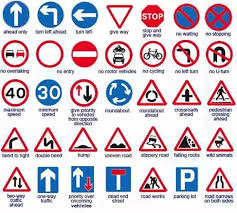A car accident, also referred to as a “traffic collision,”
or a “motor vehicle accident,” occurs when a motor vehicle strikes or collides
another vehicle, a stationary object, a pedestrian, or an animal. While some
car accidents result only in property damage, others result in severe injuries
or death.
A number of factors contribute to the risk of collision,
including vehicle design, speed of operation, road design, road environment,
and driver skill, impairment due to alcohol or drugs, and behavior, notably speeding
and street racing. Worldwide, motor vehicle collisions lead to death and
disability as well as financial costs to both society and the individuals
involved.
Car accidents are such common place in our society today that many
just write them off as a fact of life. It is true that accidents can happen,
but more times than not it was someone’s carelessness that led to the crash.
Most motor vehicle accidents could have been avoided if it were not for the
other driver’s negligence.
Below are some of the facts and statistics of car accidents
1. Texting While Driving
The average text message takes about 4.6 seconds to compose and
send. While on the steering, that would take your eyes off the road long enough to drive
the length of a football field blind if you are travelling at 55 miles per
hour. Same applies to when you talk on a cell phone while driving, you are
increasing your chance of being in an accident by a large margin.
2. Vehicle Rollovers
These are easily the most deadly type of car accidents. It refers to the moment when a vehicle tips over onto its side or roof.
Rollovers have a higher fatality rate than other types of vehicle collisions.
3. High Mortality Record
It is true that more than 3 million people across the world die every year due to Car Accidents.
4. Men Actually Cause Twice As Many Accidents As Women
Men have been known to show reckless bravery even when it is clearly too dangerous. They cover more miles and engage in riskier driving practices, hence, they die more frequently.
5. Seat belts Save Lives
Simply wearing a seatbelt reduces your risk of a crash
related death by 70 percent. Men are 30% less likely to
use their seat belts than women.
6. Airbags
Air bags work when an electronic sensor in the car senses a
sudden, sharp deceleration (such as a crash) and detonates a small charge which
inflates the bags. The presence of airbags in vehicles account for the reduced mortality rate in some accidents.
The air bag is inflated at speeds of up to 200 miles per hour.
This is faster than the blink of an eye.
7. Infants
Children under the age of 13 should ride buckled up in the
back seat. Small children should ride in the back seat in a car
seat that is approved for their age and size. Never put infants, seated in rear facing car seats, in
the front seat of a car with a passenger side air bag. If an infant must ride in the front seat of a car that
has a passenger side air bag, put the infant in a front facing car seat.
Children that must ride in the front seat should use a booster seat, or a
correct fitting lap and shoulder belt, and then the seat should be moved back as far as
possible.
8. Car Accidents Have Been In Occurrence Since The Invention Of Vehicles
These photographs are taken in Boston in the 1930s. They show us that
there were just as many reckless drivers back then as there are on
the roads now.
9. Road Signs
In some countries, especially in the third world countries, many drivers and road users cannnot interpret
road signs.
10. Potholes
Potholes are very frustrating for drivers, because sometimes
they can’t be avoided. Swerving into another lane when cars are coming trying
to avoid the potholes has caused thousands of collisions. Potholes are rampant in most developing countries.




















































